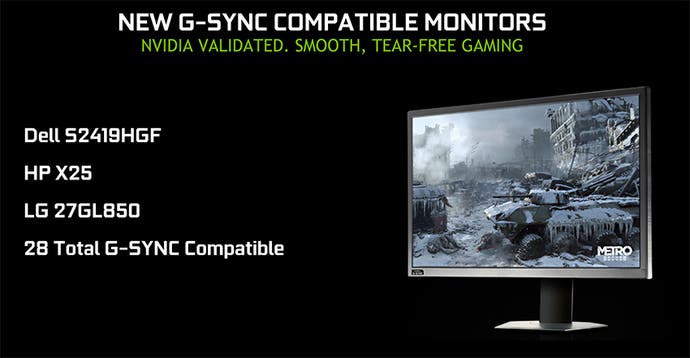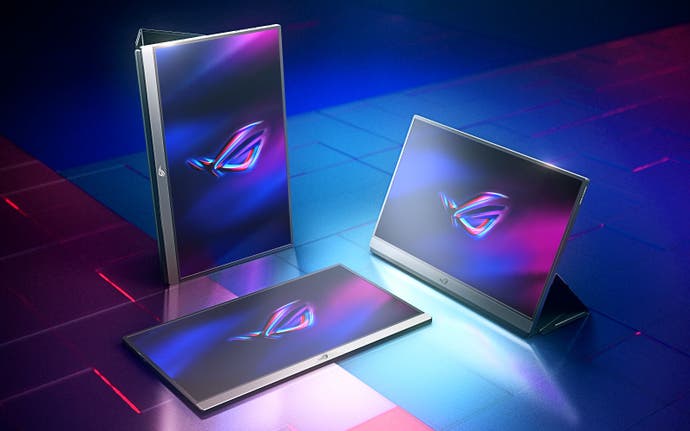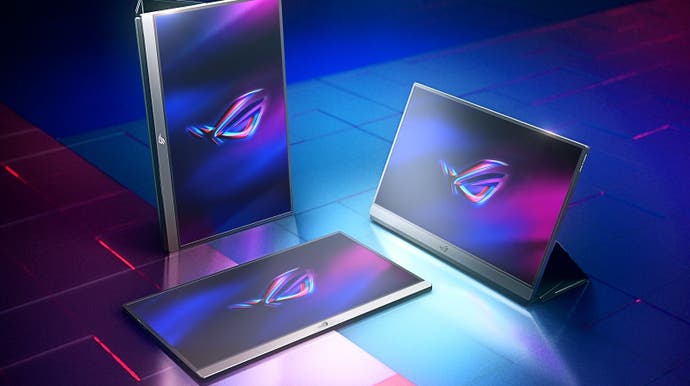Nvidia announces new G-Sync Compatible monitors, bringing count to 28
Plus details on an exciting portable display for esports gamers.
While Computex 2019 coverage has been dominated by new Ice Lake mobile processors from Intel and Ryzen 3000 processors from AMD, Nvidia took the chance to announce a new batch of G-Sync Compatible certified displays - and explain why so many of the best gaming monitors flunked out of its certification process.
To refresh your memory, Nvidia added FreeSync support for GeForce graphics cards earlier this year. Users are free to use any FreeSync monitor they like over DisplayPort by enabling the option in the Nvidia Control Panel, but a short list of monitors certified by Nvidia are guaranteed to work out of the box, no tweaking needed. Nvidia announced 12 monitors had passed its testing process initially, with 13 more joining the list over the next few months. Today, Nvidia has marked three more gaming monitors as G-Sync Compatible, bringing the new total to 28.
The new monitors are the 24-inch 120Hz Dell S2419HGF, the 25-inch 144Hz HP 25X and the 27-inch 144Hz 1440p LG 27GL850.

Nvidia has tested over 500 variable refresh monitors to get these 28 winners, meaning only five per cent made it to the final stage. Nvidia broke down the process in an interesting blog post, showing how the field was narrowed down over time. A handful of monitors couldn't be acquired for testing, while over 270 flunked out after possessing too narrow a VRR range - Nvidia demands a FreeSync window of at least 2.4:1, ie 60-144Hz. Of the remaining monitors, more than 200 exhibited image quality, flickering or other disqualifying issues.

To see the full list of G-Sync Compatible monitors, check out our recommendations for the best FreeSync and G-Sync Compatible monitors for Nvidia graphics cards.
In other Computex monitor news, Asus unveiled a very unusual model: a portable 17-inch IPS monitor called the ROG Strix XG17 that refreshes at a blistering 240Hz. That rivals the fastest gaming monitors on the market, and it can operate for three hours at that frequency with only a 7800mAh battery. At lower refresh rates, it could eke out closer to four or five hours before conking out.

Connectivity is served by USB-C and Micro HDMI, making this a good fit for recent laptops that have the chops to hit high frame-rates in esports titles like CS:GO but don't have high refresh rate screens match. The XG17 also comes with variable refresh rate support, likely FreeSync. It's a compelling package, but it's sure to come at a premium price. Asus has yet to announce pricing or availability for the gaming screen, although a similar 15.6-inch 1080p touchscreen portable monitor called the ZenScreen Touch debuts next month.
Stay tuned for any other major stories as Computex 2019 continues.

